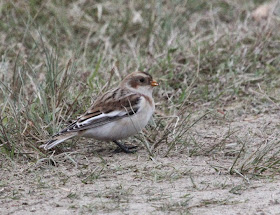Canada's boreal forests are considered to be the most intact forests on earth, with over 3 million square kilometers of intact habitat undisturbed by roads, settlements and industrial development.
Boreal forests are dominated by black and white spruce, tamarack and pine with a small proportion of deciduous trees. The boreal forest or tiaga forms a transition zone that separates deciduous woodlands from the tundra in the north.I enjoyed seeing the map below, showing the boreal forests around the world which helps give a perspective on how close we are to the artic region when we encounter these forests.
A spruce bog is a wetland in the boreal forest region.
Lichen covered branches were a common sight.
As you can see, we are still bundled up. Strong winds continued during our entire visit to Riding Mountain, making our walk in the bog invigorating! It was quite beautiful and serene.
In this more densely forested area, Christian pointed out trees that had been frequented by Three-toed Woodpeckers. The outer bark of these trees is stripped from woodpeckers excavations as they uncover insect larvae.
The trees can be spotted at a distance because of their richer brown appearance.
Above and below, another site where you can identify woodpecker activity. We wanted to SEE a Three-toed woodpecker here but did not have that good fortune. We did see one later in another area at a distance.
We did not identify this thorny shrub above, but we did flush a couple of Ruffed Grouse, shown below, as we continued on the trail.
When we returned to the parking area, Christian spotted a Snow Bunting. our first encounter with this species. They are abundant in the area later in the month, and we saw many in flight as we continued on to Churchill.
This one was very cooperative!
This is the sixth post in a series on my journey to Churchill, Manitoba, to see Polar Bears including a visit to Riding Mountain National Park. Click the journey to Churchill link to see all the posts. The most recent post will appear first. When you reach the end of the page, click "older post" to continue with the series.
Next: the historic district of Winnipeg
Riding Mountain National Park
More information about Boreal Bogs
Hudson Bay Buggies and Bears with Rail Travel Tours
Learn about Polar Bears


































































